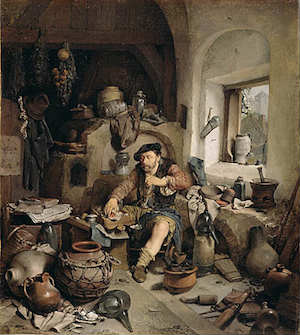
Among the few individuals who know what spagyric extracts are, there are still fewer among them who understand that spagyria differs from herbalism and homeopathy. While both have their benefits as alternatives to trending allopathic medicine, and even depend on similar ancient herbal knowledge, there are crucial differences that determine their usefulness in various scenarios.
History of Herbs: Paracelsus and Hahnemann
Spagyric medicine actually predates homeopathy by about two centuries. The former was first coined by the 16th century Renaissance visionary, Paracelsus, who abided by Hippocrates’ dictum, “like cures like,” as well as old-world herbal knowledge from China, Tibet, and India. Paracelsus espoused the principles of alchemy to work with medicine, dividing a plant into three basic parts:
- Mercury: The water element in which the essence of the plant is carried.
- Salt: The earth element, and the calcined ashes of the plant.
- Suphur: The fire element and the essential oil of the plant.
Homeopathy’s father, Samuel Hahnemann, abided by the same basic philosophy but differed in execution. His basic herbal extract, and that of homeopaths today, are simply the mercurius level of the plant without the minerals and enzymes found in the salt and sulphur levels (and much less work).
Spagyric Liquid Extracts Versus Herbal Tinctures
Herbal tinctures are typically alcoholic extracts of a plant or plants, although some varieties are made with vinegar, glycerol, ether, or some other material. Alcoholic extracts, however, should be avoided as they can damage the integrity of the extracted substance.
Paracelsus and modern-day spagyrics process a plant to retain its botanical properties and nutrients before separating the three parts and extracting nutrients and energies therein before reuniting them. The careful separation, extraction, and reunification process ensures that as much of the plant’s nutrition that can be drawn by modern technology is drawn into the liquid herbal extract. Equally important is the ratio of the said nutrients — which in synchrony allow the plant to live and thrive in nature — that is retained in the spagyric liquid extract.
Both methods of nutrient extraction have their uses, but spagyric extracts are arguably more versatile in their use because they are always non-toxic and gentle. Spagyric extracts are easy to use internally and externally as complementary and natural remedies.
The Spagyrex® Process
Global Healing has combined ancient and current technologies to create a revolutionary, multi-step, alchemical and spagyry-based processing technique with the invention of the proprietary Spagyrex® method. The result is a line of unparalleled products founded on the power and process of transmuting a common substance into one of great value.
†Results may vary. Information and statements made are for education purposes and are not intended to replace the advice of your doctor. If you have a severe medical condition or health concern, see your physician.







